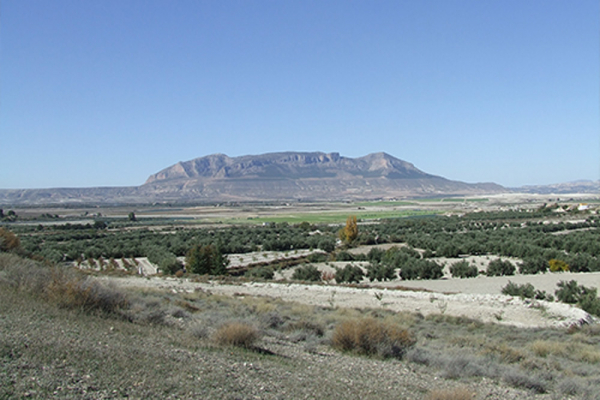UAH scientists participate in a study that determines the sex and the age authors of cave art
An international team of scientists, in which Universidad de Alcalá participates, applies the study of paleodermatoglyphs to the cave paintings found in the coat of Los Machos. It´s the first time that a study like this points to the age and sex of authors of prehistoric paintings.
The study, led by Universidad de Granada (UGR) and in which Universidad de Alcalá (UAH) participates, has determined for the first time the sex and age of the authors of cave paintings found in the coat of Los Machos (on the east side of Cerro de Jabalcón in Zujar, Granada) from the analysis of their fingerprints.
This work, which has been published in the prestigious magazine Antiquity, has analyzed the 32 patterns painted in the painting panel of the coat of Los Machos in Prehistory, between 7000 and 5000 thousand years ago. Researchers have identified that finger paintings in this place belong to fingerprints of two different individuals: an adult male, over 36 years of age, and possibly a young woman or, moke likely, a juvenile individual, who could be female or male.
As Francisco Martínez Sevilla, researcher at the UAH and the UGR explains, 'This identification of two individuals of different age or sex opens new perspectives on the interpretation of rock art and tells us about the social context in which it occurred, where the participation of different members of the community stands out. This wirk shows that the representation in these cave paintings was not limited to a specific set of age or sex'.
This case is the first application of the paleodermatoglyph study to rock art, demonstrating the important potential of this technique for prehistoric art studies. These analyzes have been carried out by the research group GROB - Research Group in Osteobiography - with Professor Assumpció Malgosa as coordinator.
In the painting panel of the coat of Los Machos, 32 painted motifs have been identified, among which are mostly anthropomorphic, circular and geometric figures. The paintings have probably been fully preserved, as endorsed by the geomorphological study and its arrangement. The overlapping of the figures and the different colors of the pigments indicate the presence of two phases of paint, which could represent two different chronological episodes.
 Figure A shows a photograph of the male schematic art panel. In photo B, the same image processed using ImageJ® software is displayed
Figure A shows a photograph of the male schematic art panel. In photo B, the same image processed using ImageJ® software is displayed
In this research, the authors have performed an analysis of the rocky coat and pictorial panel, including its geological morphology (which causes the conservation and durability of the paintings over time); the techniques used in the application of the painting; the regional archaeological context; the chronological attribution and identification of the biological profile of the authors of the paintings through the analysis of paleodermatoglives (old fingerprints).
The cave paintings are perhaps one of the most widely disseminated human symbolic manifestations in the world. Research in this area has focused on the study of the reasons represented, their meaning, their geographical distribution and their chronology. The person who painted or recorded the graphs is one of the issues that most interest the researchers. Knowing the sex and age of the authors of the pictorial panels would allow to define in what social context they were carried out, whether they were individual acts or by several members of the community.
‘In this work, we have conducted an interdisciplinary study of the schematic art panel of Los Machos coat. Schematic art is one of the three styles defined for the Iberian Peninsula, along with the 'Levantino' and macroschematic, for recent prehistory. Schematism is a pictorial style that appears throughout the Peninsula and dates from the Old Neolithic to the Copper Age (mid-VI to III BC)', the researcher says.
In the study they have taken part, in addition to Francisco Martínez Sevilla, Meritxell Arqués, Xavier Jordana y Assumpció Malgosa (Universidad Autónoma de Barcelona); José Antonio Lozano Rodríguez, Margarita Sánchez Romero and Javier Carrasco Rus (Universidad de Granada) and Kate Sharpe (University of Durham in the United Kingdom).
Publicado en: Inglés
